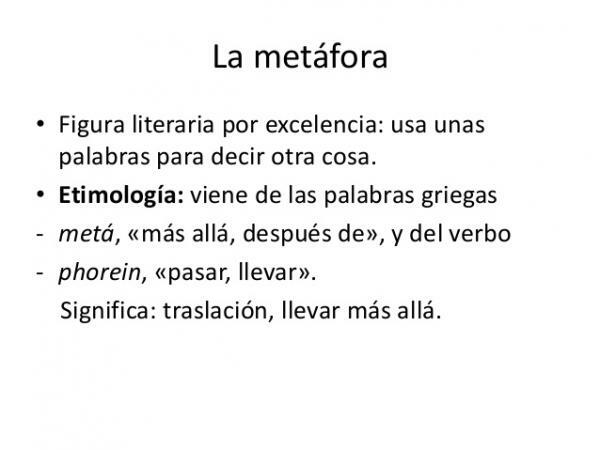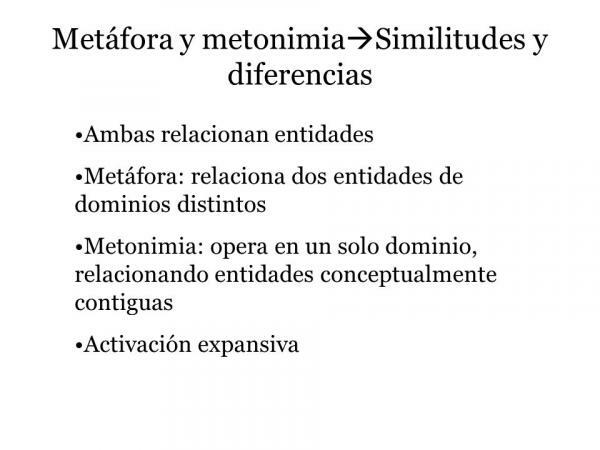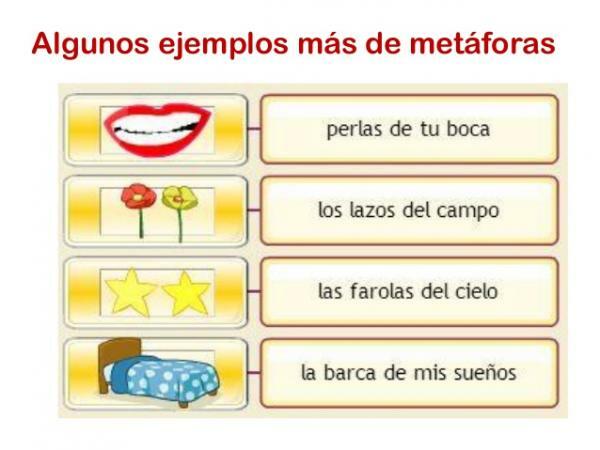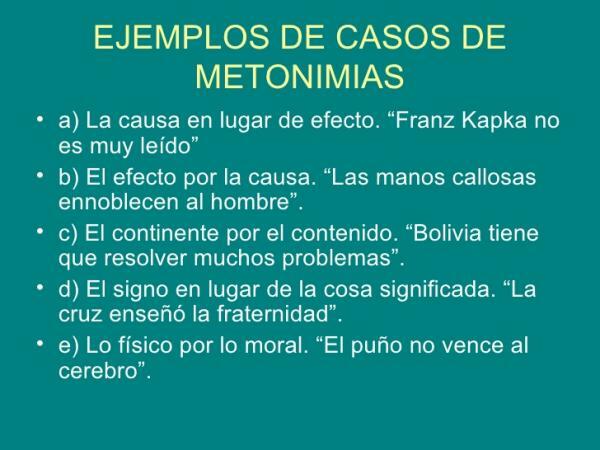The main DIFFERENCES between metonymy and metaphor

Image: Primary Education
Have clear definitions of the literary figures helps us to carry out a much clearer analysis of a text. Of course, it is not always easy to identify these literary resources the first time because many have some kind of similarity. Metonymy and metaphor, for example, are two of the most confused literary devices. That is why in our lesson of a TEACHER we are going to know what the differences between metonymy and metaphor. So take a pencil and paper to avoid being wrong again.
Index
- Definition of metonymy
- Definition of metaphor
- Main differences between metaphor and metonymy
- Examples of metaphors
- Examples of metonymy
Definition of metonymy.
The metonymy is a semantic change consisting of give the name of one object to another, that is, to name an object with the name of another object or different thing. Of course, not just any object will do. Both objects must have a close content, hence the change is possible.
Metonymy example:
- Shall we have a few beers? In this case it is understood that what they are going to drink is the content of a beer, that is, a beer, and not a glass. As the two meanings are very close (beer cane), one of them has taken the meaning of the other to reduce the conversation and use economic language.
Types of metonymy
Within metonymy there are several typeswhich we will summarize below:
- Place for what is produced in it: he likes Rioja a lot (in this case he likes the wine made in the Community of La Rioja).
- Author by work: It's a Dalí.
- Part for the whole: There is not a soul.
- Instrument by artist: That painter has a very agile brush.
- Effect for cause: My sweet torment (the author of the phrase refers to his wife as torment).
- Concrete for the abstract: You will win your plate with the sweat of your brow.
These are the most commonly used types of metonymy and therefore important to remember.

Image: Slideplayer
Definition of metaphor.
The metaphor, like metonymy, it is a semantic change that names an object after the name of another because of the similarity that exists between the two. This definition is precisely what can get confusing. But with the examples you can see it very clearly:
Metaphor example:
- Her hair is golden. The author does not mean that the hair of the person he refers to is made of gold, but that it is golden in color. Here, the word gold stands for gold.
Ultimately, the metaphor has two terms, a real term and an image term.
Types of metaphor
As with metonymy, the metaphor can be classified into different types:
- Pure metaphor: in this type of metaphor only the term image appears. Your parchment moon, precious touching comes. Here, Federico García Lorca, who is the author of these verses, refers to the tambourine, which is the real term that does not appear.
- Appositional metaphor: There is no join term here, just a comma is used. Gypsies came through the olive grove, bronze and sleepy. In this example, also the work of Federico García Lorca, the order of the terms has changed. B is A.
- Synesthetic metaphor: this type of metaphor is one of the most used since it is based on synesthesia, that is, on the confusion of the sensations that are perceived through the senses. A pink caress Juan Ramón Jiménez.

Image: Slideshare
Main differences between metaphor and metonymy.
So what are the differences between metaphor and metonymy? Both metaphor and metonymy are used to make comparisons or to refer to some terms from others. But it is not exactly the same. Meanwhile in the metaphor the terms bear some resemblance to each other, in the case of metonymy the relationship between the terms they have is more concrete, be it cause-effect, part-whole or container-content, among others.
Examples:
- The hair is golden (blond). We are faced with a metaphor by the fact of substituting one term for the other.
- Drink four glasses. In the case of metonymy, It does not mean that they are going to drink the glasses, but the content of them.
Although it may seem difficult for you to identify or distinguish between metaphor and metonymy, with practice and examples you will see it really simple and quick to do.

Image: Primary Education
Examples of metaphors.
Metaphors are one of theliterary resources most used. That is why it is important that you are clear about everything related to this trope. Let's look at some examples.
- The cotton clouds.
- Your teeth are pearls.
- Your eyes are black night.
- Your hair is oil.
- The kiss of him, soft summer breeze.
- That athlete is lightning.
- The golden ring emerges from the sea.
- His hands are olive branches.
- Your hugs are strokes of joy.
- His eyes are windows to paradise.
- Your lips are scented petals.
- Your eyes are two stars.
- You are the sun that illuminates my day.
- The drum from his chest.

Image: Slideshare
Examples of metonymy.
Just as it is important to identify metaphors the first time, it is also important in the case of metonymy. We are going to know some examples so you can see it more clearly:
- In the museum of Modern Art there is a Picasso.
- I've had a sherry.
- Ricardo is pure heart.
- We have a bottle.
- Today the youth speak.
- Buy a Tiffany.
- Give me your phone number.
- I have goose bumps.
- Put the batteries on.
- He has no brakes.
- I read Garcilaso.
- Carlos was the sadness of my summer.
- The Royal House made statements in this regard.
- I have bought a Mozart.
Do not forget to leave your comments and ask all your questions, from UNPROFESOR.com we will be happy to help you distinguish, finally, the metaphor of metonymy.

Image: Yavendras.com
If you want to read more articles similar to Metonymy and metaphor: differences, we recommend that you enter our category of Literary concepts.
Bibliography
- Rodríguez Jiménez, V. (1995). Writing manual: spelling, literary resources, styles, text comment (No. 001.8 ROD)



